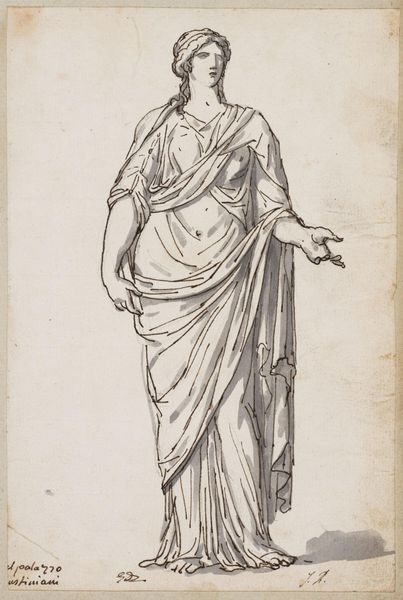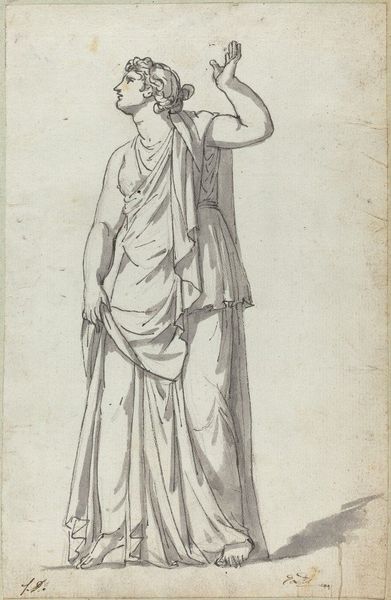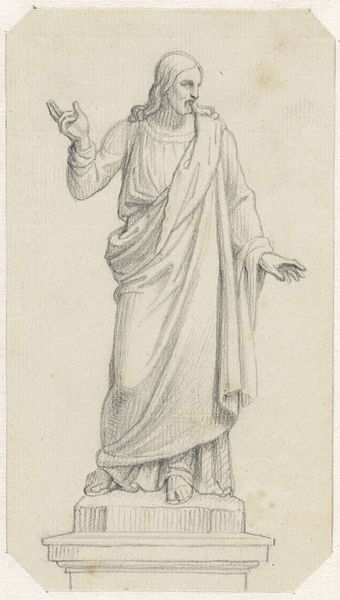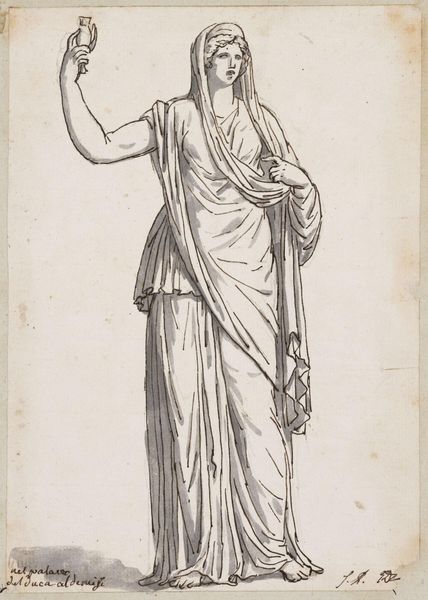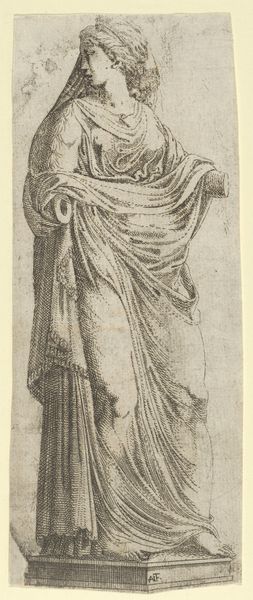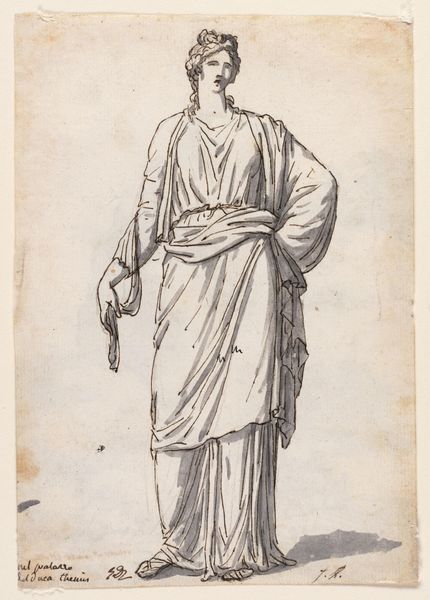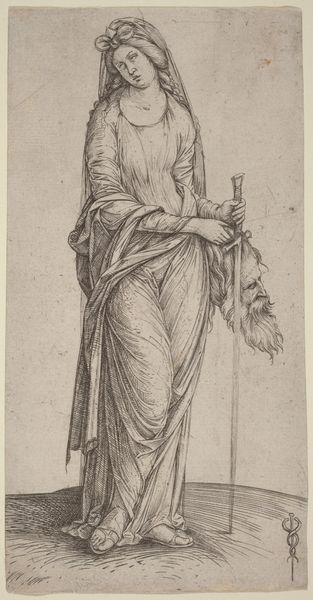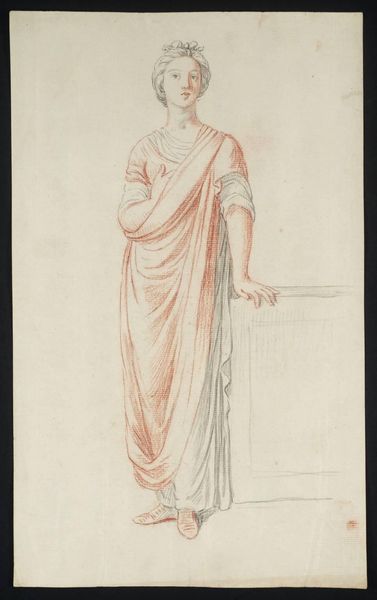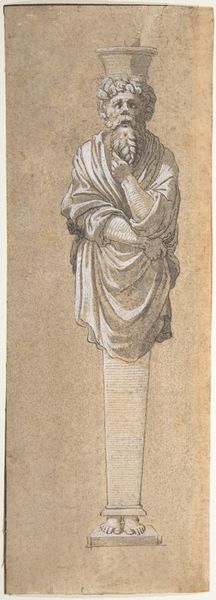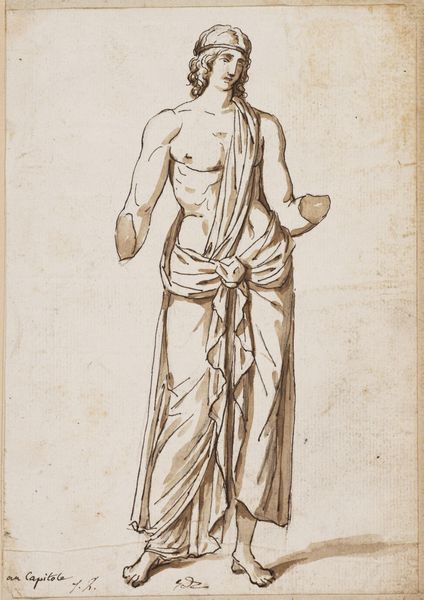
drawing, paper, pencil
#
drawing
#
pencil sketch
#
classical-realism
#
figuration
#
paper
#
11_renaissance
#
pencil
Dimensions: height 230 mm, width 130 mm
Copyright: Rijks Museum: Open Domain
Curator: Welcome. We are standing before Gerard ter Borch the Elder's drawing, "Statue of the Muse Urania," created around 1609. It's a pencil sketch on paper, currently housed here at the Rijksmuseum. Editor: My initial impression is one of subdued elegance. The hatching gives depth to her drapery. Despite being a "statue," there's something very human in her stance, even her slight asymmetry feels less idealized, somehow. Curator: Ter Borch captures that delicate balance perfectly. Urania, the Muse of Astronomy, embodies intellectual pursuits and celestial harmony. This drawing provides a glimpse into the cultural values of the Renaissance, highlighting a renewed interest in classical ideals. Look how her pose mirrors antique sculptures! The knowledge of the Greco-Roman period provided foundations for the pursuit of Arts and Sciences during Ter Borch’s time. Editor: Right. And the choice of Urania is fascinating given the tumultuous period. I am struck by the power dynamic implied when claiming knowledge over, say, the stars. Science during the Renaissance was still tied to religious and philosophical interpretations, constantly bumping against institutional power structures. Curator: Absolutely, and note her gesture; her open palm—not assertive, but invitational—suggests contemplation over domination. Consider this: Renaissance iconography saw the classical deities embodying timeless knowledge. What symbols do you observe? Editor: You pointed it out nicely already, the drapery and her contrapposto pose are all signals toward classical values. And yet, it's still a drawing; an unfinished sketch made in a very specific era. Also the lines that mark up and down her robe show us where this sculpture has possibly been fractured or broken, and later repaired, to hold it together throughout the years. In light of historical revisionism, I want to ask what canons of thought had to be disfigured, reformed, or removed entirely, to present this "wholeness" of history. Curator: Your interpretation adds crucial depth, prompting us to question the selective preservation of knowledge. Editor: This drawing encourages a dialogue between ancient ideals and contemporary scrutiny, acknowledging the ongoing process of reassessment. Curator: Indeed, it serves as a potent reminder of the past, its complexities, and its enduring presence in shaping our present. Editor: It makes me think about the cultural narratives that have been built into even stone. Thank you, I enjoyed this perspective shift.
Comments
No comments
Be the first to comment and join the conversation on the ultimate creative platform.
